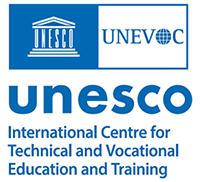
The UNESCO-UNEVOC International Centre: Who We Are | What We Do | Working With Us | Get in Touch
The UNEVOC Network: Learn About the Network | UNEVOC Network Directory
For Members: UNEVOC Centre Dashboard
Thematic Areas: Inclusion and Youth | Digital Transformation | Private Sector Engagement | SDGs and Greening TVET
Our Key Programmes & Projects: BILT: Bridging Innovation and Learning in TVET | Building TVET resilience | TVET Leadership Programme | WYSD: World Youth Skills Day
Past Activities: COVID-19 response | i-hubs project | TVET Global Forums | Virtual Conferences | YEM Knowledge Portal
Our Services & Resources: Publications | TVET Forum | TVET Country Profiles | TVETipedia Glossary | Innovative and Promising Practices | Toolkits for TVET Providers | Entrepreneurial Learning Guide
Events: Major TVET Events | UNEVOC Network News
Generative AI is a type of artificial intelligence that uses machine learning algorithms to generate new content. Unlike traditional AI, which is programmed to respond to specific inputs, generative AI is designed to be creative and produce original outputs. This can include anything from art and music to text and even entire virtual worlds.
While traditional AI approaches are based on rules and patterns, generative AI relies on models that learn from large amounts of data and can then generate new content that is similar in style and structure to the data it was trained on.
UNEVOC Comment:
Popular GAI tools include ChatGPT (text) and DALL·E (images).